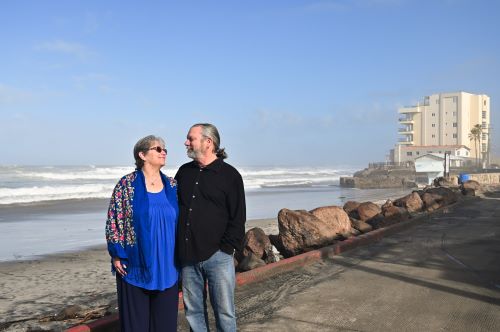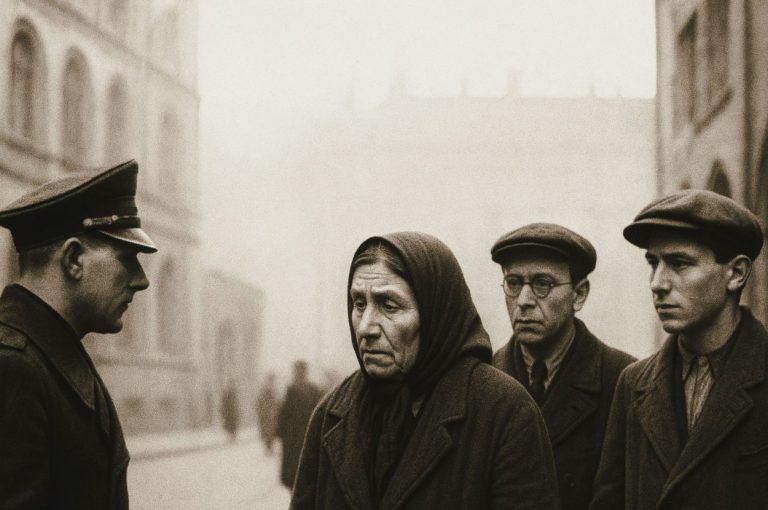

They are neighbors, landlords, patients, and coworkers. They are also, increasingly, a mirror. One held up not only to Mexico, but to the country they left behind.

By Matthew A. McIntosh
Public Historian
Brewminate
A Migration Story in Reverse
Migration stories often follow a familiar path, south to north, border crossings, family separations, the pursuit of the so-called American Dream. But a quieter, less examined movement is unfolding in the opposite direction. Americans are now the largest single group of immigrants to Mexico, not as tourists or temporary workers, but as residents. Some come with laptops and remote work visas. Others bring retirement savings and a desire to stretch their pensions. Still others arrive with nothing more than frustration, disillusionment, or a yearning for a different rhythm of life.
According to Mexico’s National Institute of Migration, as of early 2025, more than 1.6 million U.S. citizens are residing in Mexico, either temporarily or permanently. That figure surpasses the number of Canadian, Central American, and European residents combined. In Mexico City, once the seat of colonial administration and now a cosmopolitan sprawl of over 20 million, English is increasingly common in cafés, coworking spaces, and real estate offices.
What began as a niche movement among retirees and digital nomads has become a structural demographic shift. It is not just the volume of American arrivals that is reshaping Mexican cities, but the cultural and economic friction that follows in their wake.
Who Is Coming, and Why
The archetype of the American in Mexico used to be a retiree in San Miguel de Allende or a beach dweller in Baja California. That type still exists, but the new wave is more economically and generationally diverse. Many are younger professionals who can work remotely and have been priced out of major U.S. cities like San Francisco, Austin, or New York. Others are families escaping school shootings, healthcare costs, or what they describe as a general social unraveling.
For some, the decision to move south is a response to rising cost of living pressures. A one-bedroom apartment in central Mexico City may cost the equivalent of $500 to $800 per month—still high by Mexican standards, but significantly cheaper than most U.S. urban centers. Access to private healthcare, household services, and organic produce is often more affordable. The exchange rate, currently hovering near 18 to 19 pesos to the dollar, remains favorable.
There is also a psychological dimension. In interviews conducted across Mexico City, Guadalajara, and Oaxaca, American migrants frequently cite a desire for “freedom” from American life. They are not escaping political regimes or persecution, but burnout, debt, and a culture of hyper-productivity. The irony is not lost on them: in fleeing the pressures of American life, they often replicate some of its dynamics elsewhere.
Local Reactions and Cultural Tensions
While some Mexican cities have embraced the new arrivals, others are struggling with the pace and impact of the influx. In central neighborhoods of Mexico City such as Roma Norte and Condesa, long-time residents have watched rent prices skyrocket. Spanish-language signage is increasingly replaced with English, and once-quiet neighborhoods now host a carousel of Airbnbs and rooftop workspaces.
There is growing backlash. In 2023, protest graffiti appeared throughout the capital reading “New Conquistadors” and “Mexico is not your playground.” In some cases, tenants have been evicted so that landlords can cater exclusively to foreigners willing to pay higher rates. A report by the Mexican NGO Fundación para la Vivienda Digna found that foreign demand contributed to a 25 percent rise in urban rent prices between 2021 and 2024.
The Mexican government, while welcoming foreign income, has also begun to respond. In 2024, it implemented stricter rules on short-term rentals in several historic districts and introduced residency permit guidelines requiring income proof and intent to integrate. Officials have also hinted at possible taxes on foreign-owned properties in saturated markets.
But the tension is not always hostile. Many locals speak of the Americans with mixed feelings, grateful for the economic boost, concerned about displacement, and curious about the cultural exchange. Restaurants offering fusion menus and bilingual menus are thriving. So are English-language schools and clinics targeting foreign residents.
A Country of Exiles and Arrivals

Mexico has long been a refuge for disillusioned Americans. In the mid-20th century, artists and writers like William Burroughs and Leonora Carrington sought inspiration in its landscapes and cities. Vietnam War draft resisters found safety in its legal protections. The current wave is less ideological and more structural, a symptom of the broader unraveling of American life for all but the wealthiest.
Yet it would be wrong to describe the Americans arriving in Mexico as victims. Many come with privilege (dollars, passports, options) that shield them from the bureaucratic precarity and discrimination faced by Central Americans migrating north. That disparity is not lost on critics who question the double standards of border control and economic migration.
The juxtaposition is stark. While migrants from Guatemala or Honduras may be detained at Mexico’s southern border, Americans enter visa-free and often move into gentrified housing in cities their own citizens cannot afford. It is a reminder that immigration, like all systems, operates within hierarchies of power, class, and race.
Where This Is Going
The rise of American immigration to Mexico reveals a new layer in the conversation about borders and belonging. It forces a reevaluation of who gets to be mobile and under what conditions. It also underscores the shifting economic landscape of the Americas, where inequality is no longer defined solely by geography.
If trends continue, Mexico may find itself in a position few predicted a generation ago: as a country receiving more U.S. citizens than it sends. That inversion carries symbolic weight. It suggests that the story of migration is not linear, but cyclical. That no nation, even one as powerful as the United States, is immune to the forces of displacement. In the end, the Americans arriving in Mexico are not tourists anymore. They are neighbors, landlords, patients, and coworkers. They are also, increasingly, a mirror. One held up not only to Mexico, but to the country they left behind.
Originally published by Brewminate, 08.07.2025, under the terms of a Creative Commons Attribution-NonCommercial-NoDerivatives 4.0 International license.


